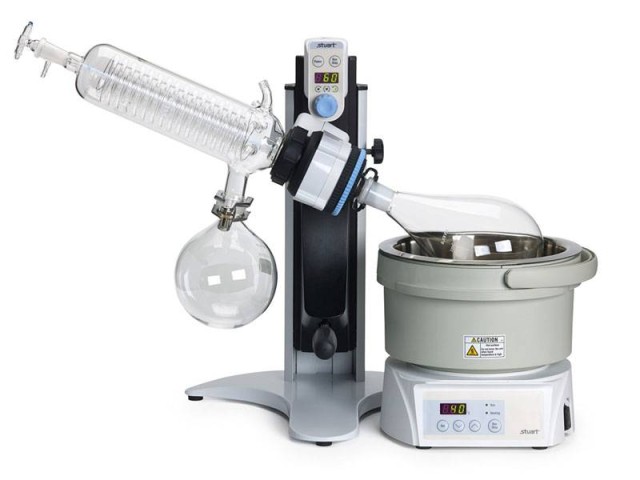Rotary evaporators, often referred to as rotavaps, have become indispensable tools in cannabis research, particularly in the extraction and purification processes. Their primary role is to efficiently remove solvents from cannabis extracts, a critical step in producing concentrated cannabinoids, terpenes, and other compounds while preserving their integrity. The innovation in rotary evaporator technology has significantly advanced the efficiency and quality of cannabis processing. One of the key innovations in rotary evaporators is the integration of advanced vacuum systems and heating controls. Modern rotavaps are equipped with precise vacuum pumps that enable the reduction of pressure, lowering the boiling points of solvents and facilitating faster evaporation. This not only speeds up the extraction process but also reduces the risk of thermal degradation of sensitive compounds. Additionally, state-of-the-art heating baths allow for precise temperature control, ensuring that the extraction occurs at optimal temperatures for preserving the quality of cannabinoids and terpenes. The introduction of digital controls and automated features represents another significant advancement.

These innovations enable researchers to program and monitor the extraction process with greater accuracy and consistency. Automated rotary evaporators can handle multiple samples simultaneously, increasing throughput and efficiency in a laboratory setting. Moreover, the integration of software systems allows for real-time data monitoring and process optimization, which helps in fine-tuning extraction parameters to achieve the desired product quality. In terms of best practices, proper maintenance and calibration of rotovap evaporators are crucial for ensuring reliable performance. Regular cleaning of the glassware and checking for any leaks or wear in the vacuum system help maintain the equipment’s efficiency and longevity. It is also important to use high-quality solvents and maintain the correct concentration levels to prevent contamination and ensure consistent results. Researchers should be well-versed in the specific requirements of their extraction processes and adjust parameters such as rotation speed, bath temperature, and vacuum pressure accordingly. Another best practice involves understanding the properties of the cannabis materials being processed. Different strains and extraction goals may require adjustments in the rotary evaporator settings to optimize yield and purity.
For instance, when dealing with high-viscosity extracts or heat-sensitive compounds, slower evaporation rates and lower temperatures may be necessary to prevent degradation. Tailoring the extraction process to the specific characteristics of the material helps in achieving the best possible outcomes. Furthermore, safety is a paramount consideration when using rotary evaporators. Ensuring that all safety protocols are followed, including proper ventilation and the use of protective equipment, is essential for preventing accidents and exposure to potentially hazardous chemicals. Adequate training for personnel operating the equipment is also critical for maintaining a safe and effective laboratory environment. In conclusion, the advancements in GWSI rotary evaporator technology, including improved vacuum systems, digital controls, and automation, have revolutionized cannabis research by enhancing extraction efficiency and product quality. Adhering to best practices in equipment maintenance, process optimization, and safety ensures that researchers can fully leverage these innovations to advance the field of cannabis science. As technology continues to evolve, rotary evaporators will undoubtedly remain a cornerstone in the pursuit of high-quality cannabis extracts and concentrates.


